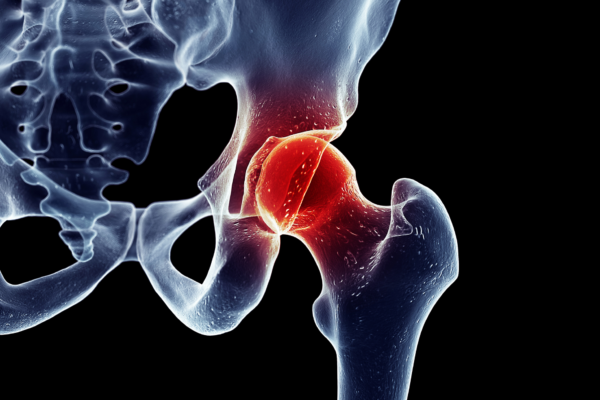
Trochanteric Bursitis
Trochanteric bursitis, a common yet often overlooked condition, affects the hip region and can cause significant discomfort and mobility issues. The trochanteric bursa, a fluid-filled sac located near the greater trochanter of the hip bone, can become inflamed and irritated, leading to trochanteric bursitis. In this blog, we will delve into the causes, symptoms, diagnosis, and treatment options for trochanteric bursitis, as well as lifestyle changes to alleviate pain and promote recovery.
Several factors can contribute to trochanteric bursitis:
- Overuse or Repetitive Activities: Prolonged or repetitive hip movements, common in activities like running, walking, or climbing stairs, can irritate the bursa.
- Muscle Imbalances: Weak hip muscles or muscle imbalances can lead to improper loading of the hip joint, putting stress on the bursa.
- Hip Injuries: Previous hip injuries or surgeries can increase the risk of bursitis.
- Bone Spurs: Bone growth around the hip joint (bone spurs) can irritate the bursa.
- Rheumatoid Arthritis: Inflammatory conditions like rheumatoid arthritis can lead to trochanteric bursitis.
Symptoms
The symptoms of trochanteric bursitis may vary from mild to severe and can include:
- Pain on the outside of the hip that may radiate down the thigh or buttocks.
- Pain worsens when lying on the affected side, walking, climbing stairs, or getting up from a chair.
- Tenderness and swelling over the greater trochanter.
- Stiffness and limited range of motion in the hip joint.
Diagnosis and Treatment
If you suspect you have trochanteric bursitis or experience persistent hip pain, it is essential to seek medical evaluation for an accurate diagnosis. The diagnosis typically involves a physical examination and a review of the individual’s medical history. In some cases, imaging tests such as X-rays or MRI scans may be ordered to rule out other hip conditions.
Treatment options for trochanteric bursitis may include:
- Rest and Activity Modification: Giving the affected hip time to heal by avoiding activities that exacerbate the pain.
- Pain Relief: Over-the-counter anti-inflammatory medications, such as ibuprofen or naproxen, can help reduce pain and inflammation.
- Ice and Heat Therapy: Applying ice packs or warm compresses can help alleviate pain and reduce inflammation.
- Physical Therapy: A tailored physical therapy program can improve hip muscle strength, flexibility, and balance, helping to relieve stress on the bursa.
- Injections: In some cases, corticosteroid injections into the bursa can provide significant pain relief and reduce inflammation.
- Assistive Devices: Using a walking aid, such as a cane, may help offload the affected hip during the healing process.
- Ultrasound-Guided Aspiration: In severe cases, fluid may be drained from the inflamed bursa using ultrasound guidance.
How Can a Physiotherapist at Physiocare Twyford, Reading Help?
While various treatments are available, physiotherapy plays a crucial role in managing and alleviating the symptoms of trochanteric bursitis. A skilled physiotherapist can design personalized treatment plans to address the root cause of the condition, promote healing, and restore normal function.
- Comprehensive Assessment: When a patient seeks help for trochanteric bursitis, a physiotherapist will conduct a comprehensive assessment to understand the individual’s unique condition. This assessment involves evaluating the patient’s medical history, performing physical examinations, and identifying any contributing factors, such as gait abnormalities or muscle imbalances.
- Pain Management: One of the primary goals of physiotherapy in treating trochanteric bursitis is pain management. Through various therapeutic techniques, such as manual therapy, soft tissue mobilization, and electrotherapy, the physiotherapist can effectively reduce pain and inflammation in the affected area.
- Strengthening Exercises: Physiotherapists develop tailored exercise programs to strengthen the muscles around the hip joint. Strengthening exercises are essential for stabilizing the hip and improving its function, which can help in reducing stress on the bursa and promoting healing.
- Stretching and Flexibility Exercises: Stretching and flexibility exercises are incorporated to improve the range of motion in the hip joint. Enhanced flexibility can alleviate muscle tension and tightness, further reducing pressure on the inflamed bursa and aiding in pain relief.
- Corrective Techniques: Physiotherapists address any biomechanical issues or postural imbalances that may be contributing to trochanteric bursitis. By utilizing corrective techniques and ergonomic advice, they help patients modify their daily activities to reduce strain on the hip joint and facilitate healing.
- Education and Lifestyle Modifications: Education is a crucial aspect of physiotherapy for trochanteric bursitis. Physiotherapists educate patients about their condition, how to manage pain at home, and provide guidance on lifestyle modifications to prevent future flare-ups. This may include advice on proper sitting and sleeping positions, using assistive devices, and implementing self-care strategies.
- Gradual Return to Physical Activities: As the patient’s condition improves, the physiotherapist guides them through a gradual return to physical activities and exercises. They monitor progress, making necessary adjustments to the treatment plan as needed, to ensure optimal recovery and minimize the risk of reinjury.
Book your appointment today – call 0118 934 4055 CONTACT US











